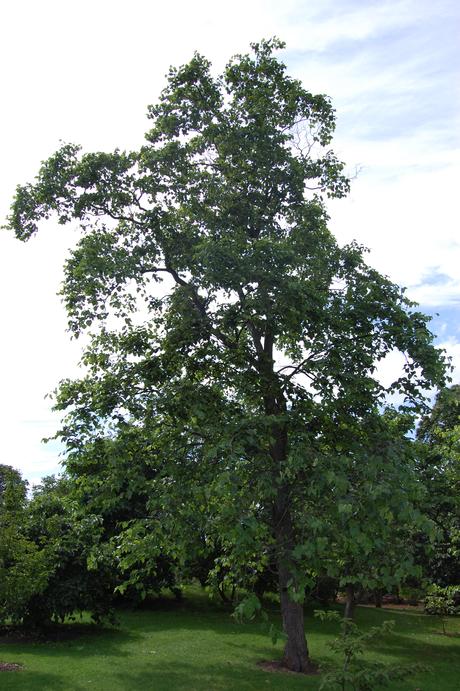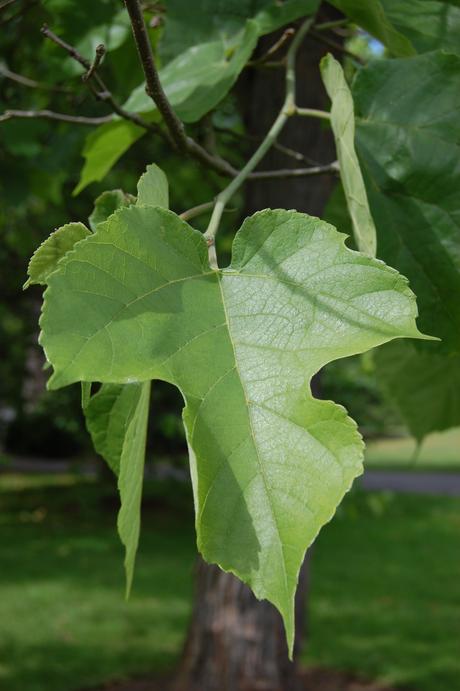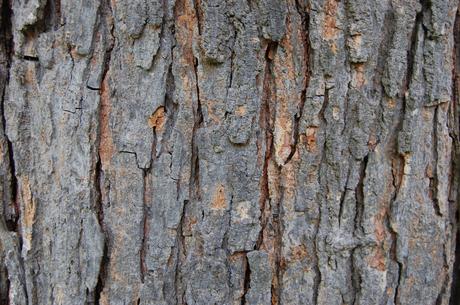Position: Full sun to partial shade
Flowering period: Spring (although not impressive)
Soil: Moist, well drained
Eventual Height: 15m
Eventual Spread: 10m
Hardiness: 5b, 6a, 6b, 7a, 7b, 8a, 8b, 9a
Family: Moraceae
Morus cathayana, commonly known as Hua Sang, is a relative of the Mulberry. It is a deciduous small tree with an upright spreading habit. Morus cathayana is native to regions of China, Japan and the Korean peninsula. In its native habitat it grows in thickets and moist woods on the sunny slopes of mountains. Its typical leaves are mid green and heart shaped, however, its leaves associated with vigorous young growth have deep lobing. Its bark is pale grey, initially smooth, becoming fissured with age. Its flowers are in the form of catkins and are followed by a fleshy aggregate white/ red/ or purple fruit. These fruit are attractive to birds and mammals. Morus cathayana may be used as an unusual specimen tree. Necessary pruning should only be carried out during the winter months as this tree bleeds badly when cut.

Morus cathayana (28/07/12, Kew Gardens, London)

Morus cathayana leaf associated with vigorous young growth (28/07/24, Kew Gardens, London)

Morus cathayana Bark (28/07/12, Kew Gardens, London)


